The Scottish Improvement Journey: a nationwide approach to improvement
This paper shares the story of the Scottish Improvement Journey encompassing 50 years of clinical audit and improvement programmes.
10. Appendices – Scottish Patient Safety Programme Data
Figure 1: HSMR for deaths within 30 days of admission, January - March 2011 to April - June 2016, Scotland.
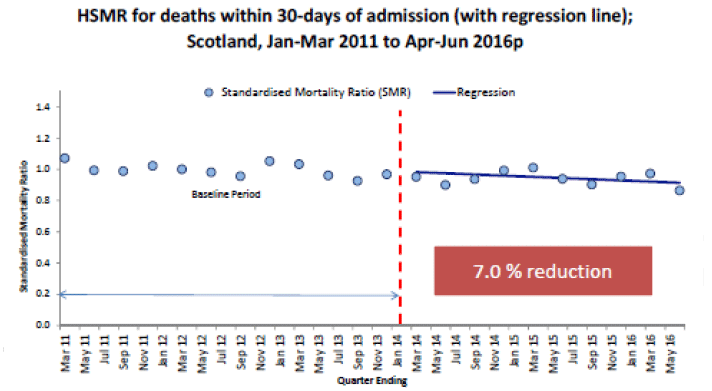
Figure 2: Total rate of cardiac arrest for 10 of 25 hospitals which have reported consistently from February 2012 to May 2016, Scotland.
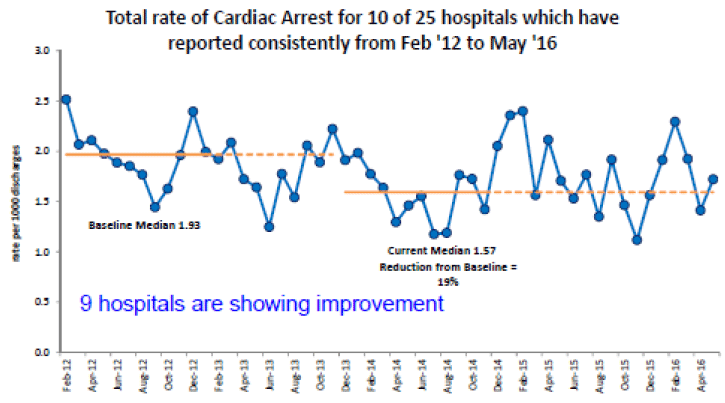
Figure 3: Total rate of cardiac arrest for all reporting hospitals, January 2008 to July 2016, Scotland.
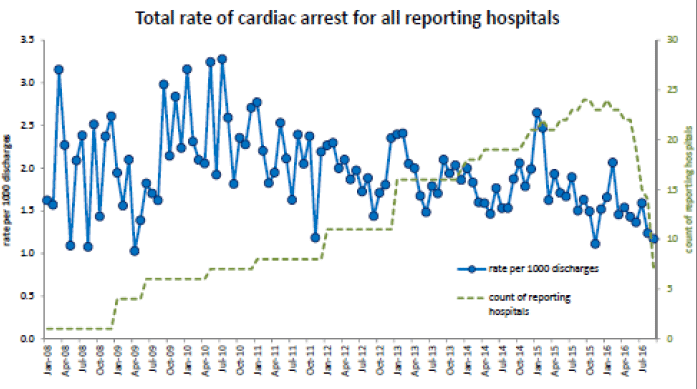
Figure 4: Total rate of falls with harm for 8 of 19 hospitals which have reported consistently from March 2014 to August 2016, Scotland.
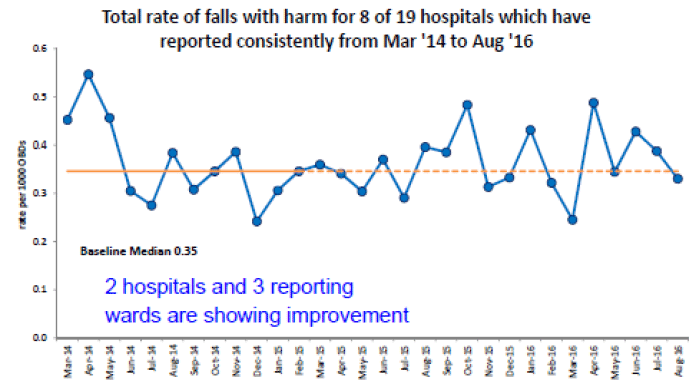
Figure 5: Total rate of falls with harm for all reporting hospitals, January 2010 – July 2016, Scotland.
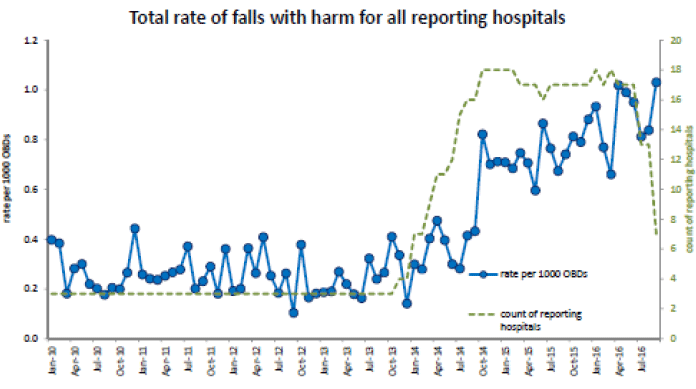
Figure 6: Total rate of pressure ulcers (2-4) for 12 consistently reporting hospitals from January 2015 – August 2016, Scotland.
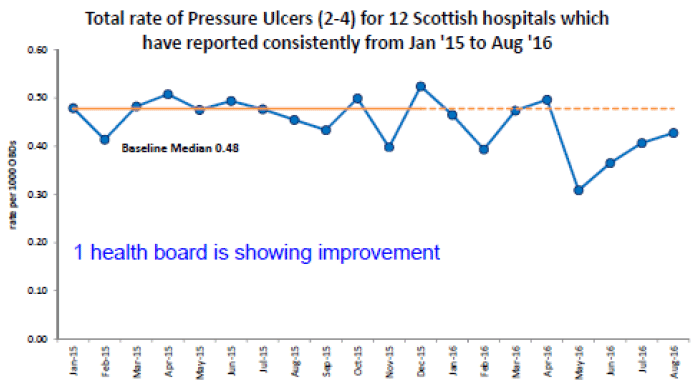
Figure 7: Total rate of pressure ulcers for all reporting hospitals, July 2012 – September 2016, Scotland.
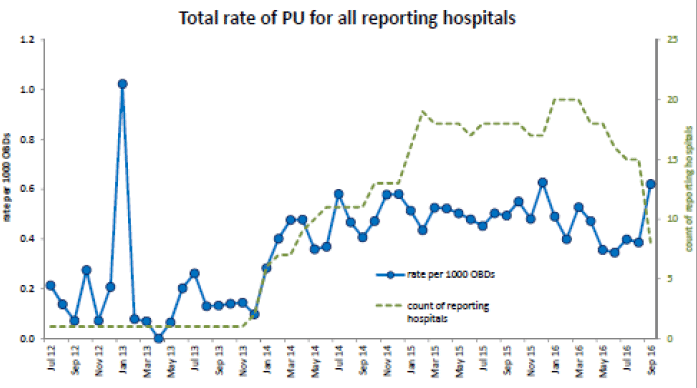
Figure 8: % 30 day mortality of ICD-10 A40/A41 January 2011 – May 2016, Scotland.
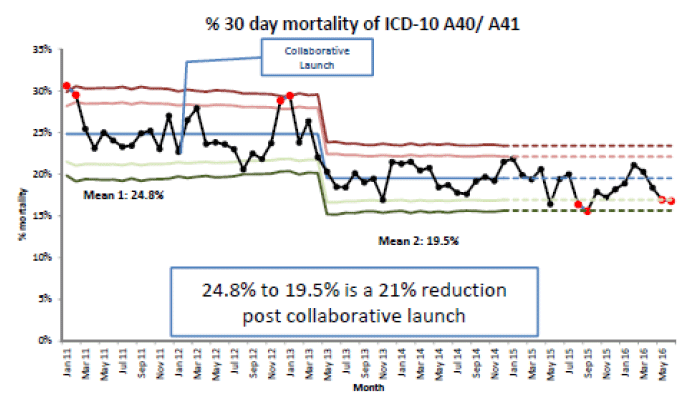
In understanding this relative mortality reduction of 21% it is important to note that, although A40 & 41 are the most frequently used codes to identify a patient with sepsis for coding purposes, a wide number of other codes are also used in this scenario.
The use of codes A 40 & 41 in clinical practice has significantly increased/improved over the last 5 years. In effect, the numerator (number of deaths) has remained largely static while the denominator (number of patients coded for sepsis) has increased by 38%.
It is not currently possible to
- quantify the % of sepsis patients currently covered by these codes
- state the acuity of patients included in this increased denominator – it is likely to include a wide range of clinical presentations from mild to severely ill which will impact on likelihood of survival
Figure 9: Total rate of restraint for 34 of 66 mental health wards consistently reporting from January 2014 to May 2016
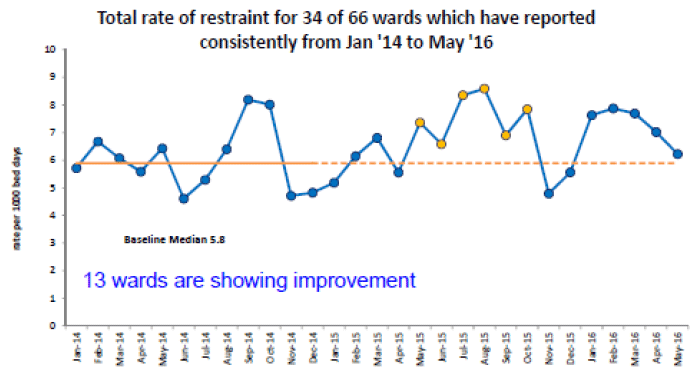
Figure 10: Total rate of restraint for all reporting mental health wards, September 2011 to July 2016, Scotland.
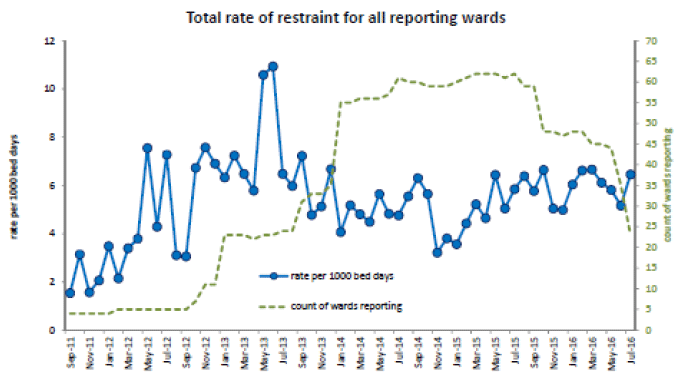
Figure 11: Total % of patients who experience self harm for 26 of 63 mental health wards reporting consistently from January 2014 to May 2016, Scotland.
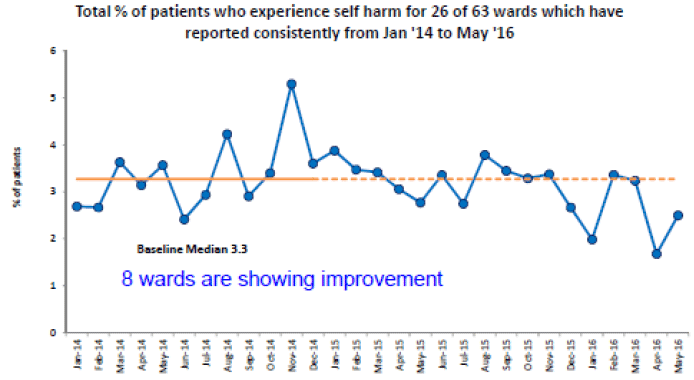
Figure 12: Total % of patients who experience self harm for all reporting mental health wards, Scotland
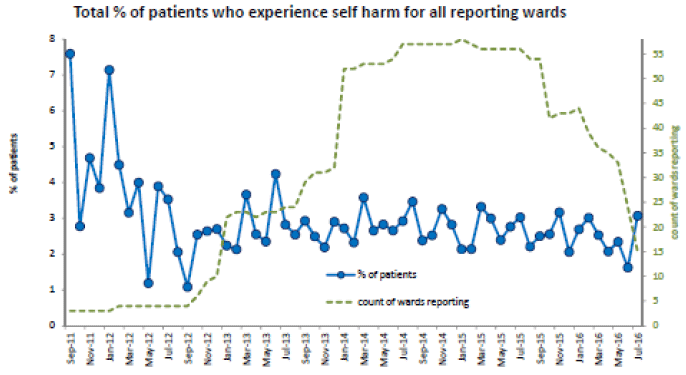
Figure 13: Total rate of stillbirths for 13 of 17 wards reporting consistently from October 2013 to July 2016, Scotland.
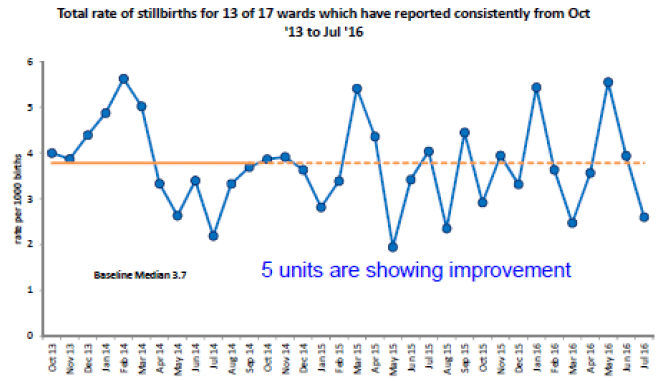
Figure 14: Total rate of stillbirths for all reporting locations, Scotland
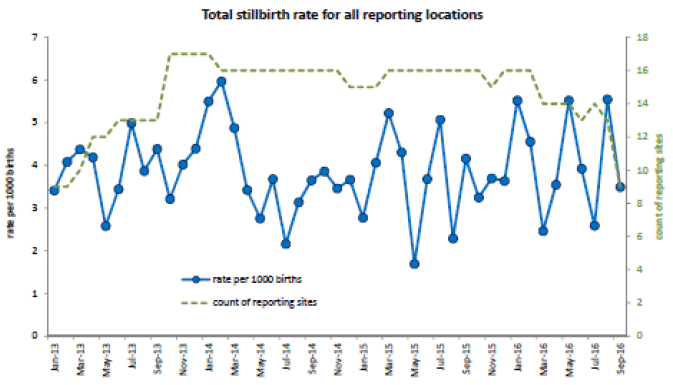
Figure 15: Total severe post-partum haemorrhage for 13 of 18 units which have reported consistently from October 2013 to July 2016, Scotland.
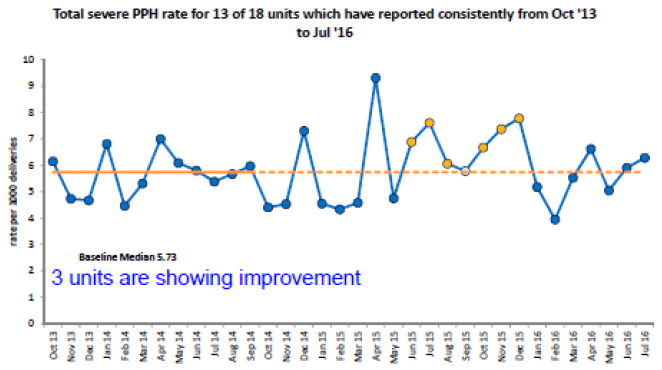
Contact
There is a problem
Thanks for your feedback